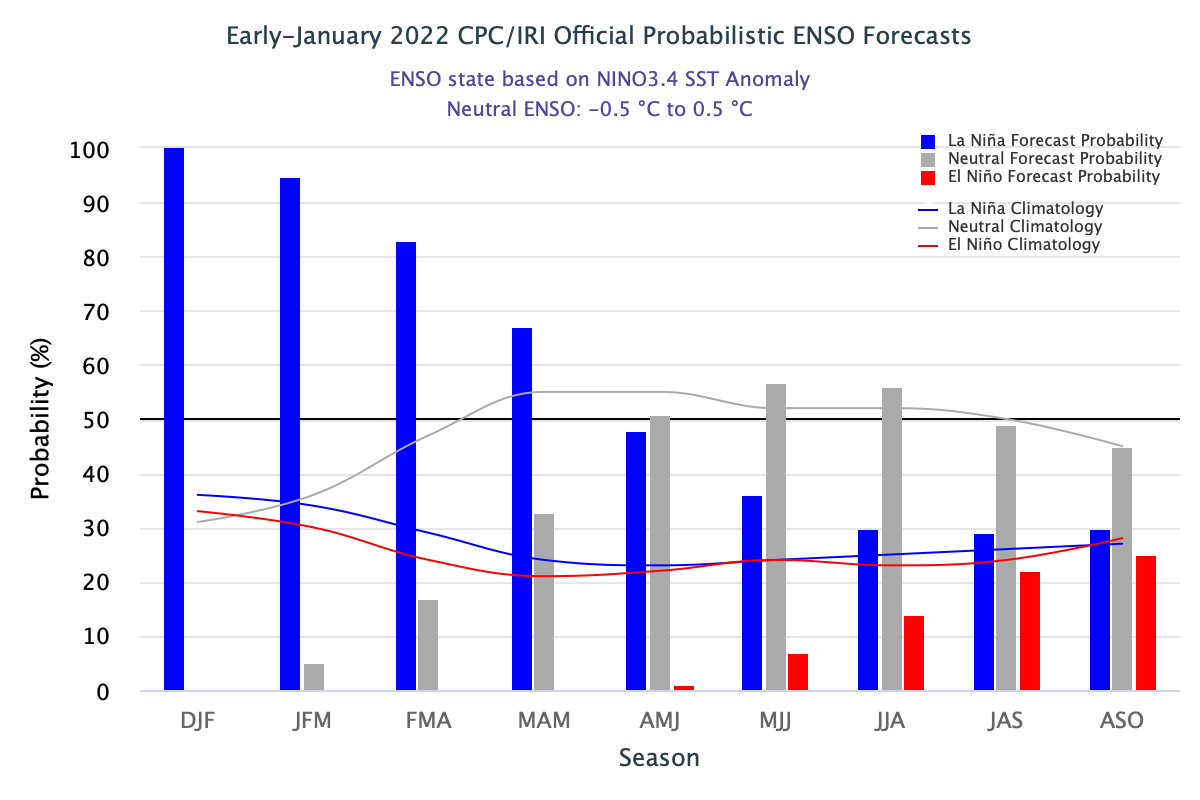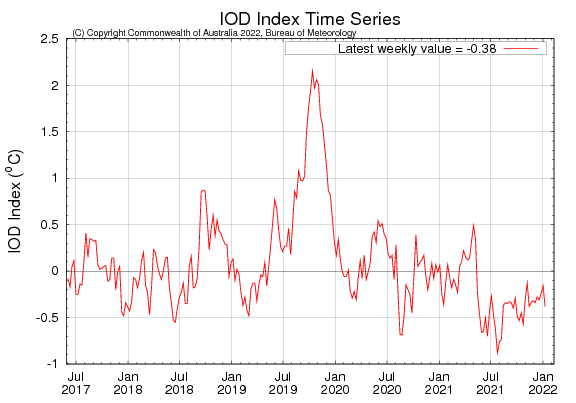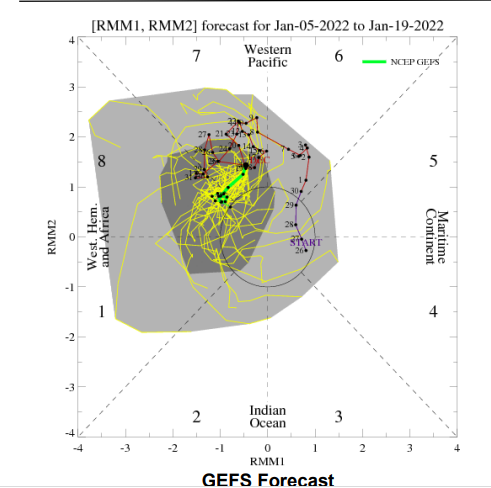
La Nina is present and therefore the advisory continued. Ocean and atmosphere indicators reflect a mature La Nina, with little variation over the last 4 weeks. The model output suggests that the event has reached its peak at moderate levels. Threshold limits of the Ocean Nino Index (ONI) are likely to be retained till mid-March and taper thereafter.
ENSO: ENSO outlook anticipates a continuation of the La Nina event till February 2022. Thereafter, it is likely to recede to become soft first and then start dissipating between March and May. It is likely to return to ENSO neutral condition with high probability, at the time of commencement of Indian Summer Monsoon. Commenting on its further progression, at this point in time, may be marred with a lot of uncertainty. Accordingly, the realistic estimates could wait till March 2022. It is still on hold for the final La Nina advisory which is issued when La Nina conditions have ended.

Flanks of Nino Indices on either side in the Eastern and Central Pacific oceans have shown a gradual decline. However, Nino 3 and Nino 3.4 continue to hold ground and remain sufficiently above the threshold of -0.5°C. The Nino Indices for the last 4 weeks are relaying confronting signals.

IOD: Indian Ocean Dipole is an oscillation of Sea Surface Temperature (SST) between +ve, neutral and -ve phases, confined to the opposite ends of the Indian Ocean. IOD is a contributory factor towards the health of the Indian Summer Monsoon. On the lines of El Nino and La Nina as an account of Pacific temperature variation, IOD, also termed as Indian Nino, is the surface temperature fluctuations in the Indian Ocean. Unlike El Nino and La Nina, which have a worldwide influence on weather conditions, the IOD effect is predominantly correlated with Australian and Asian continents.

On average, +ve, -ve and neutral IOD occur in a ratio of 2:2:6. It means, 2 events each of +ve and -ve IOD are interspersed with 6 neutral events. Consecutive +ve or -ve IOD are not very common but true for neutral events. Each of the active phases of IOD, irrespective of +ve or -ve, lasts for about 6months.and decays thereafter. In the Indian context, IOD is more relevant for southwest monsoon (June-Sep) and northeast monsoon (Oct-Dec) and remains inconsequential at other times. The latest weekly value of the IOD index to 09th Jan was -0.38°C, within neutral bounds.
MJO: Madden Julian Oscillation is the largest element of intraseasonal (30-90 days) variability in the tropical atmosphere. It is a large scale coupling between atmospheric circulation and deep tropical convection. Unlike the standing pattern of ENSO and IOD, MJO exhibits a travelling pattern that propagates eastward at approximately 4-8m/s, through the atmosphere above the warm parts of the Indian Ocean and the Pacific Ocean. MJO has an influence on the weather systems, during southwest and northeast monsoon, as they originate in the equatorial and lower latitudes of the tropics. As such, MJO is an eastward progression of clouds and rain traversing along the equatorial region. It has a limited role during the winter and pre-monsoon season over the Indian sub-continent.

The intraseasonal signal has been meandering for the last few weeks over the western Pacific Ocean. At times, it showed signals of drifting to the central Pacific but then retreating again towards the western Pacific. A similar trend is seen in the current forecast also. GEFS and ECMWF predictions are in consonance with this pattern.
The Pacific Ocean is the largest and deepest of earth’s 5 oceanic basins. It extends from the Arctic Ocean in the north to the Southern Ocean in the south and is bounded by continents of Asia & Australia on one side and America in the east. We are approaching close to the timelines of making a monsoon forecast-2022. However, a steady and balanced state of the Pacific is very essential to read the Nino indices right. Correct assessment of change over from La Nina to neutral means a lot for making Indian monsoon prediction.


